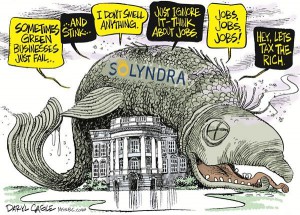Solyndra was a manufacturer of cylindrical panels of Copper indium gallium selenide (CIGS) thin-film solar cells based in Fremont, California. The falling prices of silicon meant that it had to close its business. It filed for bankruptcy.
Solyndra also received a $25.1 million tax
break from California’s Alternative Energy and Advanced Transportation Financing Authority. As this happened during election time, it immediately became a political football. Romney quickly tried to make political capital out of it by using it to accuse the Obama administration of wastefulness and f favoritism while promoting saving energy and money.
The whole issue has become politicized. Each political party is using the case to accuse the other of ‘cronyism’ (favoring one’s friends with special financial gifts and offers). But if we look closely at the case, we can see that it is not a simple case of one side is wrong and the other is r
ight. Democrats for example have pointed out that Solyandra’s loan in the first place was initiated by the Bush administration and many key investors were Republicans. A Clinton energy aide also said that using these loans as job guarantees is dangerous and insecure. Energy industry needs ‘calmer, steadier sources of funding.’
Another argument is that some people claim that solar energy is not going to be successful in the future. The Energy Department’s loan-guarantee program, enacted in 2005 with bipartisan support, has backed nearly $38 billion in loans for 40 projects around the country. Sol
yndra represents just 1.3 percent of that. So it seems that solar power is not a failure, nor is it on the way out.
There is some opinion that R&D (research and development) should be in the private sector. The figures suggest otherwise. The electricity sector is heavily regulated and capital intensive. That means it does not focus so much in innovation. Given global energy concerns, the energy sector badly needs innovation to cope with future demands and shortages of traditional fossil fuels.
China is investing heavily in alternative energy sources. A lot of other countries are doing so too, including Germany. At the heart of the argument there seems to be some anger stemming from the fact that America is supposed to be the leading technological country in the world yet it is seriously lagging behind in innovative development of alternative energy sources. Therefore it’s a very sensitive subject that can easily become political.

